The Middle East is facing a quiet but deepening addiction crisis that runs far deeper than statistics or policy debates. Because beneath its rapid development, cultural conservatism, and political complexity lies a web of unresolved trauma, social pressure, and shifting drug trends that few are openly talking about.
For years, the conversation has revolved around border control, drug trafficking, and enforcement but behind those headlines is a much more human story. Across cities and refugee camps, communities are struggling with rising heroin addiction, cocaine abuse, and the growing misuse of cannabis and synthetic drugs.
Families are watching loved ones spiral into dependence. Hospitals are seeing more admissions for overdose, withdrawal, and mental health complications. And yet, many of those caught in this cycle never reach a rehabilitation centre for addiction or an inpatient drug rehab, often because of stigma, cost, or fear of legal consequences.
This region-wide drug problem didn’t appear overnight. It’s the result of years of conflict, displacement, economic instability, and unchecked drug trafficking routes that make narcotics easier to find than quality healthcare. It’s also driven by pain, physical and emotional, that often goes untreated, pushing people toward substances as a coping mechanism.
To truly understand this addiction crisis, we have to look beyond punishment and see the people living it. We need to understand what fuels the use of substances like heroin, cannabis, and cocaine, why so many struggle to find effective heroin addiction treatment or drug rehab, and what real recovery can look like when compassion replaces stigma.
This article takes a closer look at that human reality, how the crisis has grown, the complex forces behind it, and what meaningful treatment and prevention efforts can achieve when communities and policymakers treat addiction as a health issue, not a moral failure.
What’s Driving the Addiction Crisis in the Middle East?
The growing addiction crisis in the Middle East isn’t caused by one single factor. It’s a mix of war, displacement, social stigma, and weak healthcare systems, all overlapping to create the perfect storm. Understanding these layers is crucial to addressing the region’s escalating drug problem with empathy instead of punishment.
1. Conflict and displacement: Years of conflict and political instability have left millions displaced, traumatized, and living in uncertainty. For people who’ve lost homes, jobs, or loved ones, emotional pain can become unbearable.
Many turn to substances like heroin, cannabis, or even cocaine to cope, not for pleasure, but for escape. Without stability or mental health support, early drug use can quickly spiral into dependence. In refugee settlements, access to therapy or structured rehabilitation centres for addiction is scarce, leaving trauma untreated and addiction untreated longer.
How Drug Trafficking Fuels the Addiction Crisis?
Behind every rise in drug use lies an invisible supply chain, one that stretches across borders, conflict zones, and black markets. In the Middle East, drug trafficking isn’t just a criminal enterprise; it’s a key driver of the region’s growing addiction crisis.
The area’s geography makes it a crossroads for the global narcotics movement. Heroin from Afghanistan, cocaine from Latin America, and synthetic drugs manufactured in hidden labs all pass through Middle Eastern routes before reaching Europe or Africa. But over time, these transit corridors have turned into thriving local markets. When drugs like heroin, cannabis, and cocaine become easier to access, prices drop and communities already burdened by war, unemployment, and stress become easy targets for addiction.
This steady inflow creates a dangerous cycle. More availability means more experimentation, and more experimentation leads to higher dependency rates. For many, what begins as casual use quickly turns into heroin addiction or cocaine abuse. Yet, access to heroin addiction treatment or structured drug rehab remains limited in most parts of the region, allowing the crisis to deepen.
The profits from drug trafficking are immense, often funding armed groups or fueling corruption. This makes enforcement complicated and prevention nearly impossible without strong cross-border cooperation. But beyond the politics and arrests, the real impact is felt by ordinary people, families watching loved ones fall into dependence, children growing up in environments where drugs are more common than mental health care, and communities losing their young generation to addiction.
Until drug trafficking is treated as both a security threat and a public health concern, the region’s addiction crisis will continue to expand, feeding on desperation, poverty, and the absence of accessible recovery support like rehabilitation centres for addiction or inpatient drug rehab programs.
Effective Strategies to Tackle the Addiction Crisis
Addressing the Middle East’s addiction crisis means moving beyond punishment and focusing on care that heals the body, mind, and community. Here’s what truly effective treatment should include:
1. Early Intervention and Awareness: Education is the first line of defense. Awareness programs in schools, workplaces, and communities can help people recognize early signs of heroin addiction, cocaine abuse, or other substance dependencies before they escalate. Reducing stigma encourages individuals and families to seek help sooner, rather than hiding their struggles.
2. Medically Supervised Detox and Inpatient Rehab: For many, especially those with severe dependence, inpatient drug rehab offers a safe space to begin recovery. Under medical supervision, withdrawal symptoms are managed carefully, and individuals receive structured therapy that helps them rebuild stability and self-esteem. This step is crucial for anyone seeking heroin addiction treatment or recovery from long-term substance use.
3. Psychotherapy and Emotional Healing: Addiction often masks deeper issues like trauma, grief, or anxiety. Evidence-based therapies such as cognitive behavioral therapy, motivational counseling, and family therapy help people understand their triggers and develop healthier coping mechanisms. Emotional recovery is what makes physical detox last.
4. Community and Family Support: Recovery doesn’t happen in isolation. A strong support network keeps people connected and motivated. Family education also helps loved ones understand addiction better and avoid blame or shame, which can worsen the drug problem.
5. Reintegration and Aftercare: Leaving a rehabilitation centre for addiction is just the beginning. Continued counseling, skill training, and community programs help individuals reintegrate into society and find employment. Ongoing aftercare reduces relapse risk and gives people the confidence to sustain recovery.
6. Accessible and Compassionate Care: Not everyone can afford private drug rehab programs. Governments and NGOs need to expand public rehabilitation services and make them affordable, inclusive, and nonjudgmental. Treating addiction as a health condition is key to ending the addiction crisis and restoring dignity to those affected.
Working Together to End the Addiction Crisis
Addressing the addiction crisis isn’t just the job of governments or policymakers. It starts with the people closest to those affected, healthcare providers, families, and local communities. When everyone plays their part, recovery becomes possible, and the stigma around addiction begins to fade.
1. For Treatment Providers and Professionals: Clinicians and mental health professionals need to go beyond short-term detox programs and create holistic care pathways. That means offering inpatient drug rehab, personalized therapy, relapse prevention, and family counseling, all under one roof.
Facilities like Samarpan Recovery are leading this change by combining medical expertise with compassion, providing structured programs for heroin addiction treatment, cocaine abuse, and other substance use disorders. Such centres focus not just on detox, but on rebuilding life skills, confidence, and emotional stability, helping individuals return to society with strength and dignity.
2. For Families and Loved Ones: Addiction rarely affects one person, it impacts entire families. The first step families can take is to replace judgment with understanding. Recognize that heroin addiction or any form of substance dependence isn’t a moral failure but a medical condition that needs care.
3. For Communities and Policymakers: Communities have the power to shift perception. Awareness programs, support groups, and local outreach initiatives can make help feel accessible.
Policymakers should focus on improving public healthcare systems, funding affordable drug rehab centres, and integrating mental health services into primary care. A coordinated approach is the only way to slow the addiction crisis and prevent future generations from falling into the same cycle.
Conclusion
Addiction isn’t just an individual struggle, it’s a community challenge that demands understanding, compassion, and consistent support. Recovery takes time, patience, and the right guidance, but it’s entirely possible. With proper treatment and a supportive environment, people can rebuild their lives and rediscover their sense of purpose.
If you or someone you care about is battling addiction, you don’t have to face it alone. Samarpan Recovery offers evidence-based addiction treatment, compassionate therapy, and a safe space to heal, helping individuals reclaim control and move toward lasting recovery. Reach out today and take the first step toward a healthier, addiction-free life.
Frequently Asked Questions
1. What’s causing the rise in drug addiction in the Middle East?
The growing addiction crisis stems from social instability, easy access to narcotics through drug trafficking, and limited awareness about heroin addiction and cocaine abuse.
2. How do conflict and job loss fuel substance abuse?
War, displacement, and unemployment leave people anxious and hopeless, often pushing them toward cannabis, heroin, or other substances as coping mechanisms.
3. Which drugs are most used in the region today?
Heroin, cannabis, and cocaine are among the most abused drugs, with rising cases of cocaine abuse and synthetic drug use reported across the region.
4. How are governments responding to the opioid crisis?
Many Middle Eastern countries are tightening drug trafficking laws while expanding rehabilitation centres for addiction and awareness programs on heroin addiction treatment.
5. Why is addiction treatment harder in conservative societies?
Social stigma and fear of judgment stop many from seeking help at a drug rehab or inpatient drug rehab, making the addiction crisis harder to address openly.



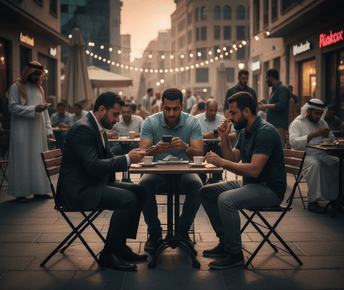


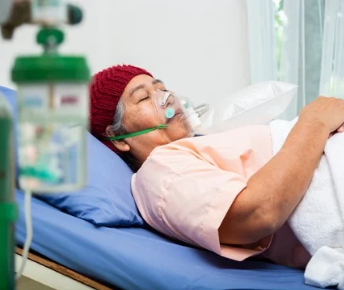
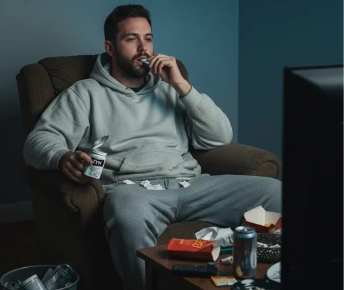

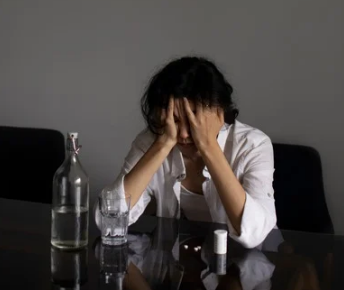
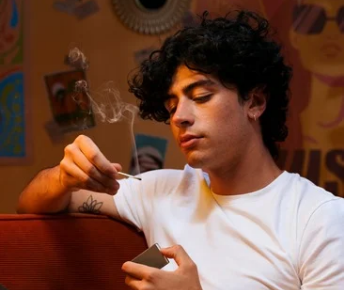













 Yes, many offer serene environments and solid therapeutic frameworks. However, quality varies, so it’s essential to research accreditation, staff credentials, and therapeutic depth.
Yes, many offer serene environments and solid therapeutic frameworks. However, quality varies, so it’s essential to research accreditation, staff credentials, and therapeutic depth.




